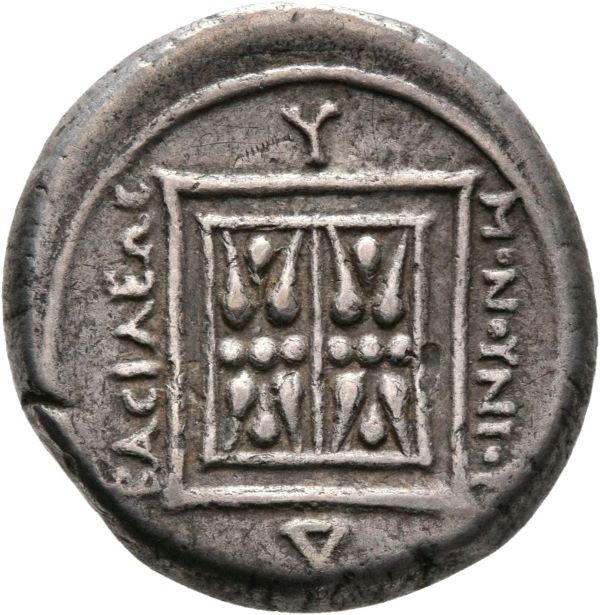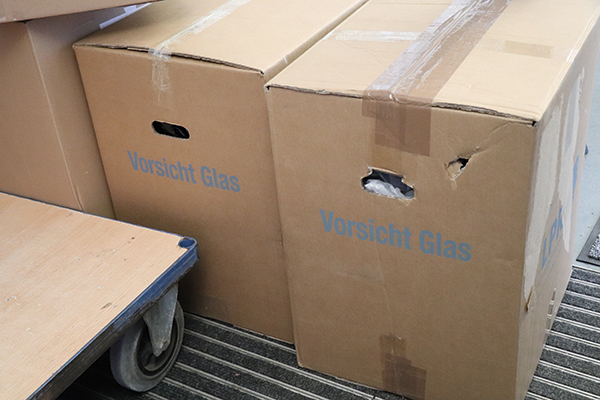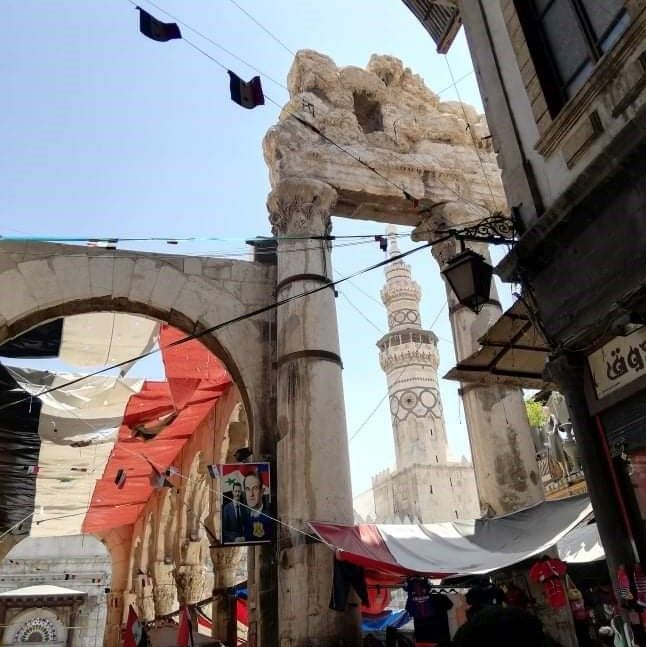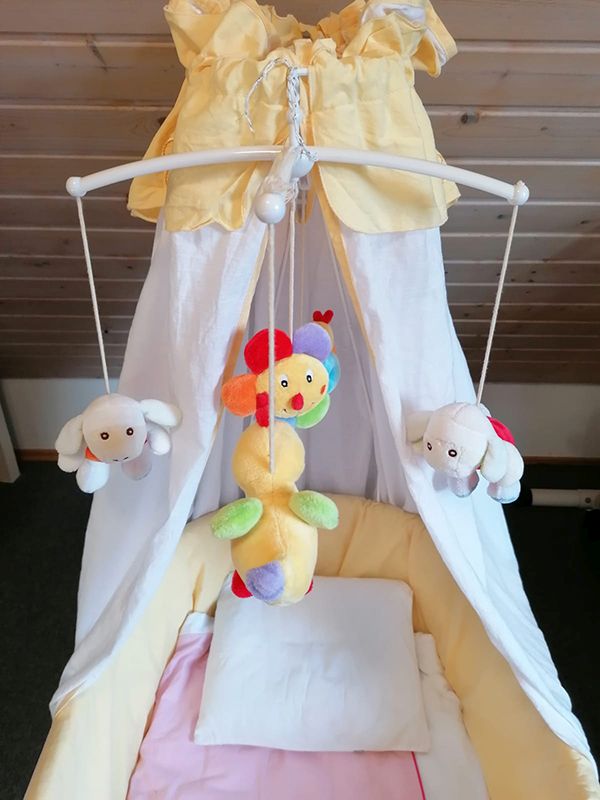By Stefan Krmnicek
In the Tübingen collection there is a coin that sheds light on the turbulent history of the Western Balkans in the early century BC. The piece should therefore also be of particular interest to the many people whose roots lie in this region and who have found a new home in Germany.
The coin with the Tübingen inventory number SNG 1508 is a silver coin weighing 10.49 grammes and measuring just under 22 millimetres in diameter. On the obverse we see a cow standing to the right. She has turned her head back to a calf sucking under her. In the field above the cow, the jaw of the Calydonian boar – a beast from Greek mythology – is depicted. The central motif on the reverse can best be described as an ornament of stars or plants in a double rectangle. Around this depiction runs the inscription ΒΑΣΙΛΕΩΣ ΜΟΝΟΥΝΙΟΥ (“of King Monounios”) and Δ or Υ(“DY”) in Greek letters.
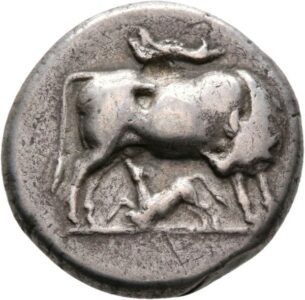
From the legend we can identify the issuer of this coinage: It is a certain King Monounios. Few historical facts are known about Monounios; his coins are the only direct legacies. Based on later written sources of the 2nd and 3rd centuries AD, we can at least roughly reconstruct the general political situation in the Western Balkans at the time of Monounios. He was a local Illyrian ruler whose power and influence in the region around 280 BC was apparently so great that he was even able to intervene in foreign policy in the conflicts between the major Hellenistic powers of Epirus and Macedonia and to become involved in the Celtic migration. In antiquity, the Illyrians formed the third major population group in the Balkans, alongside the Greeks and Thracians. The discovery of a bronze helmet with movable cheek guards at Lake Ohrid between present-day Albania and northern Macedonia can possibly be interpreted in this context. An inscription in the neck guard indicates that the helmet (today in the Collection of Classical Antiquities of the National Museums in Berlin: SMB-digital | Helm) was worn by a soldier of King Monounios.
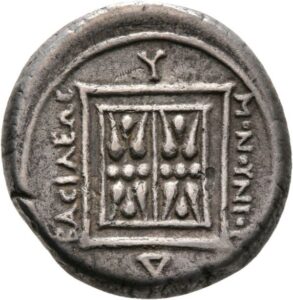
The coins are further important sources for the reconstruction of Monounios’ territorial sphere of power and influence. Our coin was minted in Dyrrhachion, today’s Durrës in Albania, as can be seen from the abbreviation ΔΥ in the legend on the reverse. With its imagery, the coin follows the previous coin types of the city unchanged. The only difference to the older series is that the name of the ruler and his title as king were added in the legend. It is particularly exciting to see how the Illyrian Monounios, who came from the non-Greek-speaking periphery, gave validity to his claim as a ruler on an equal footing with the contemporary Greek ruling dynasties in Epirus and Macedonia by presenting a Greek royal title on his coin. Unlike the Hellenistic kings of his time, however, Monounios did not have any coins struck with his portrait, but left it at merely adding his name to a municipal coinage type that had already existed for some time. After the death of Monounios, Dyrrhachion seems to have regained independence. The city continued to mint the same type of coin type, but with the name of city officials instead of the king’s name.
The coins from ancient Albania, especially the issues from Apollonia and Dyrrhachion, have been a special field of the Tübingen collection since its foundation by Carl Siegmund Tux in the late 18th century. The piece presented here was acquired for Tübingen in December 1905 in the coin shop of the Egger brothers in Vienna. Even more ancient coins can be seen in the Museum of Ancient Cultures of the University of Tübingen at Hohentübingen Castle. The present coin can also be admired virtually and free of charge in the Digital Coin Cabinet of the Institute of Classical Archaeology at https://www.ikmk.uni-tuebingen.de/object?id=ID3806 in times of corona and closed museums or for all interested parties outside Tübingen.
tun21081103

